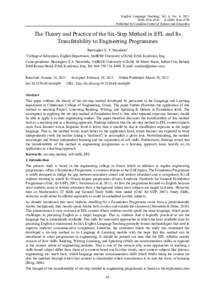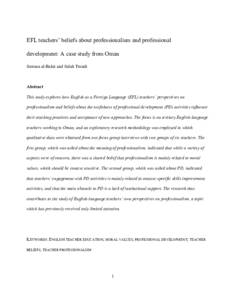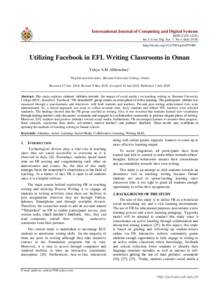Document
The Theory and practice of the six-step method in EFL and its transferability to engineering programmes.
Identifier
DOI: 10.5539/elt.v6n4p80
Publisher
Elsevier.
Gregorian
2013-03
Language
English
English abstract
This paper outlines the theory of the six-step method developed by personnel in the Language and Learning department at Caledonian College of Engineering, Oman. The paper further illustrates the application of this method in teaching Project, Listening, Reading, Writing, and Speaking & Debate at Foundation level. The assumption in applying the six-step method at Foundation level is that, after repeated exposure, learners should be able to apply it in their engineering studies. The paper therefore discusses the transferability of this method both as a teaching and as a learning approach. Findings indicate that the six-step method in EFL context expects more from learners whose linguistic level is lower than it should be due to insufficient exposure to the target language. That is, the method works much better on the application level, where learners are expected to work independently (with the teacher taking a 'backseat') to accomplish a given task. Notwithstanding, the method encourages and fosters independent learning and the acquisition of soft skills. Furthermore, findings reveal that the transferability of the method to engineering programmes as a learning approach leans heavily on its application as a teaching approach.
Member of
ISSN
1916-4742
Resource URL
Category
Journal articles




